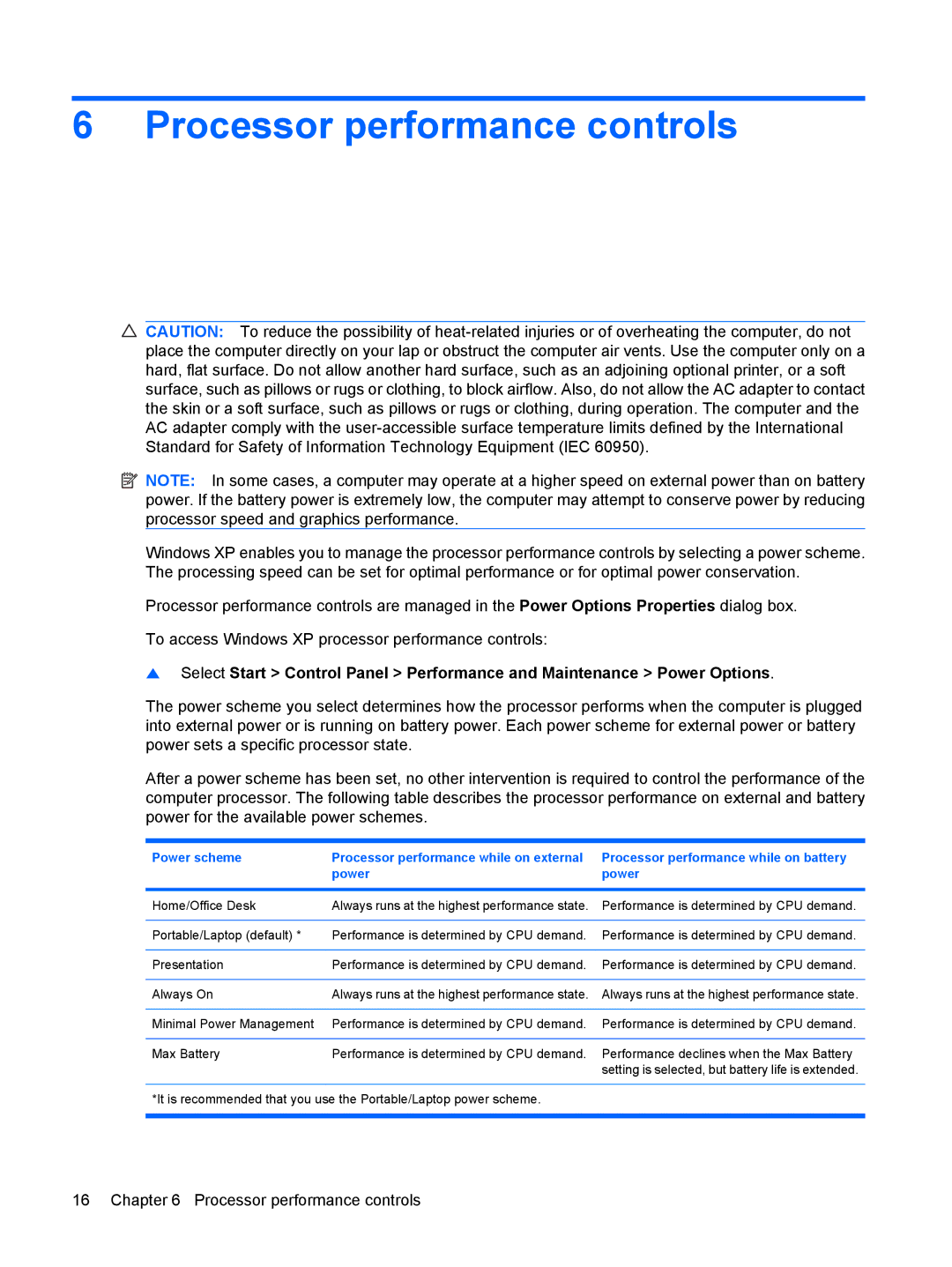
6 Processor performance controls
CAUTION: To reduce the possibility of
![]() NOTE: In some cases, a computer may operate at a higher speed on external power than on battery power. If the battery power is extremely low, the computer may attempt to conserve power by reducing processor speed and graphics performance.
NOTE: In some cases, a computer may operate at a higher speed on external power than on battery power. If the battery power is extremely low, the computer may attempt to conserve power by reducing processor speed and graphics performance.
Windows XP enables you to manage the processor performance controls by selecting a power scheme. The processing speed can be set for optimal performance or for optimal power conservation.
Processor performance controls are managed in the Power Options Properties dialog box.
To access Windows XP processor performance controls:
▲Select Start > Control Panel > Performance and Maintenance > Power Options.
The power scheme you select determines how the processor performs when the computer is plugged into external power or is running on battery power. Each power scheme for external power or battery power sets a specific processor state.
After a power scheme has been set, no other intervention is required to control the performance of the computer processor. The following table describes the processor performance on external and battery power for the available power schemes.
Power scheme | Processor performance while on external | Processor performance while on battery |
| power | power |
|
|
|
Home/Office Desk | Always runs at the highest performance state. | Performance is determined by CPU demand. |
|
|
|
Portable/Laptop (default) * | Performance is determined by CPU demand. | Performance is determined by CPU demand. |
|
|
|
Presentation | Performance is determined by CPU demand. | Performance is determined by CPU demand. |
|
|
|
Always On | Always runs at the highest performance state. | Always runs at the highest performance state. |
|
|
|
Minimal Power Management | Performance is determined by CPU demand. | Performance is determined by CPU demand. |
|
|
|
Max Battery | Performance is determined by CPU demand. | Performance declines when the Max Battery |
|
| setting is selected, but battery life is extended. |
*It is recommended that you use the Portable/Laptop power scheme.
16 Chapter 6 Processor performance controls
